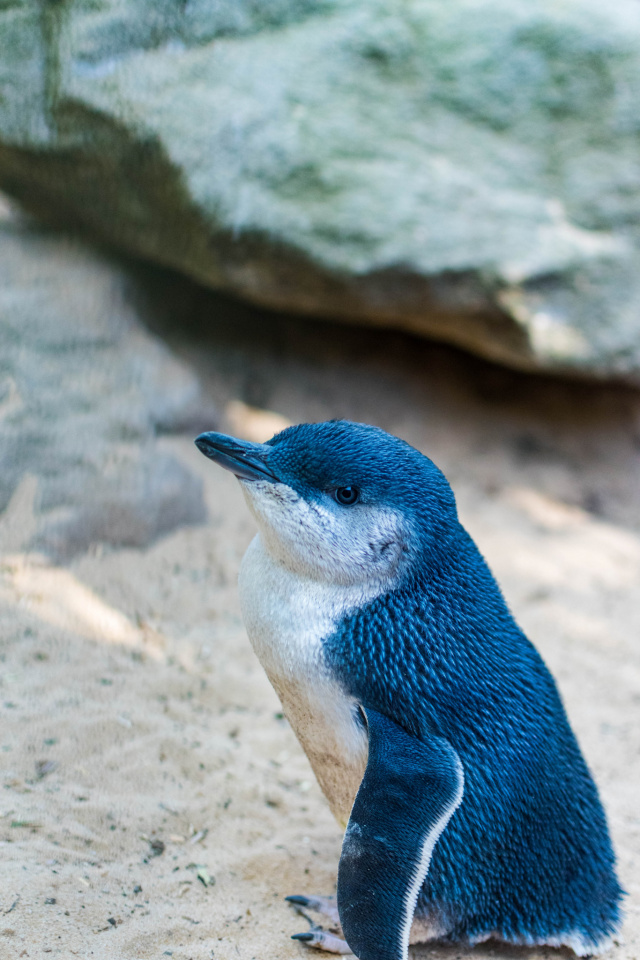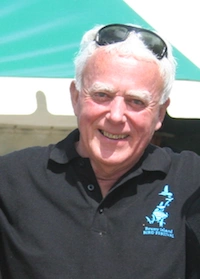To the west of the neck, you have Simpson’s bay, which is a very productive marine environment. It has an incredibly diverse shallow marine fauna including school shark, stingrays, skates, flathead, a variety of small fish. If you paddle a kayak out there, you can sometimes see almost a carpet of stingrays and skates. It’s amazing. You keep looking down and that’s all you can see.

You look out there and you can see all these different types of birds. There are two Peregrine Falcons that frequently sit on the wires down near the neck, just waiting for the starlings to show their heads. You’ve also got Silver Gulls, Pacific Gulls, New Zealand Kelp Gulls, Pied Oystercatchers, Sooty Oystercatchers, Falcons, the Australasian Grebe, the Forest Raven, the Hooded Plover, Double-Banded Plover, Red-Capped Plover, Swans.
They chase small bait-fish and shrimps and so on. Most of the Penguins frequent the ocean side of the neck beach. There are some on the Channel side. They built some tunnels under the road at the neck for the penguins, but we haven’t seen much evidence those tunnels are being used.
The vegetation at the neck once suffered very badly – it used to be burnt regularly, cattle used to graze on it, the dirt road’s dust used to clog up the pores on the plants, all of those things. The vegetation is recovering quite well now though. There’s some healthy regrowth of vegetation along the neck including native species such as Tea-Tree and Banksia marginata. A lot of the ground grasses are introduced pasture species from the cattle grazing days, and there’s also Marram grass, another introduced species.
You also have some mammals that frequent the neck, such as the occasional wallaby, pademelons, possums and quolls. The Eastern Quoll population on north Bruny is relatively prolific – because there are no foxes, only a small feral cat population, and not much competition from rabbits. Quolls are omnivorous – so will eat berries, fruits and small lizards and other small animals. They’ll eat just about anything!

I think we’ve counted 14 or 15 different bird species here in one day by just standing here and having a look. You look out there and you can see all these different types of birds.

Bob Graham
To the west of the neck, you have Simpson’s bay, which is a very productive marine environment. It has an incredibly diverse shallow marine fauna including school shark, stingrays, skates, flathead, a variety of small fish. If you paddle a kayak out there, you can sometimes see almost a carpet of stingrays and skates. It’s amazing. You keep looking down and that’s all you can see.

You look out there and you can see all these different types of birds. There are two Peregrine Falcons that frequently sit on the wires down near the neck, just waiting for the starlings to show their heads. You’ve also got Silver Gulls, Pacific Gulls, New Zealand Kelp Gulls, Pied Oystercatchers, Sooty Oystercatchers, Falcons, the Australasian Grebe, the Forest Raven, the Hooded Plover, Double-Banded Plover, Red-Capped Plover, Swans.
They chase small bait-fish and shrimps and so on. Most of the Penguins frequent the ocean side of the neck beach. There are some on the Channel side. They built some tunnels under the road at the neck for the penguins, but we haven’t seen much evidence those tunnels are being used.
The vegetation at the neck once suffered very badly – it used to be burnt regularly, cattle used to graze on it, the dirt road’s dust used to clog up the pores on the plants, all of those things. The vegetation is recovering quite well now though. There’s some healthy regrowth of vegetation along the neck including native species such as Tea-Tree and Banksia marginata. A lot of the ground grasses are introduced pasture species from the cattle grazing days, and there’s also Marram grass, another introduced species.
You also have some mammals that frequent the neck, such as the occasional wallaby, pademelons, possums and quolls. The Eastern Quoll population on north Bruny is relatively prolific – because there are no foxes, only a small feral cat population, and not much competition from rabbits. Quolls are omnivorous – so will eat berries, fruits and small lizards and other small animals. They’ll eat just about anything!

I think we’ve counted 14 or 15 different bird species here in one day by just standing here and having a look. You look out there and you can see all these different types of birds.
You might like...
Simpsons Bay
Simpsons Bay is an incredible rich and productive area of shallow coastal mudflats, rich in marine life like skates, stingrays and flathead, and with many coastal birds

Birds playing in wind at the neck

Bruny - two islands joined by a Tombolo?

Contrasting beaches at the Neck
Newsletter
Sign up to keep in touch with articles, updates, events or news from Kuno, your platform for nature
